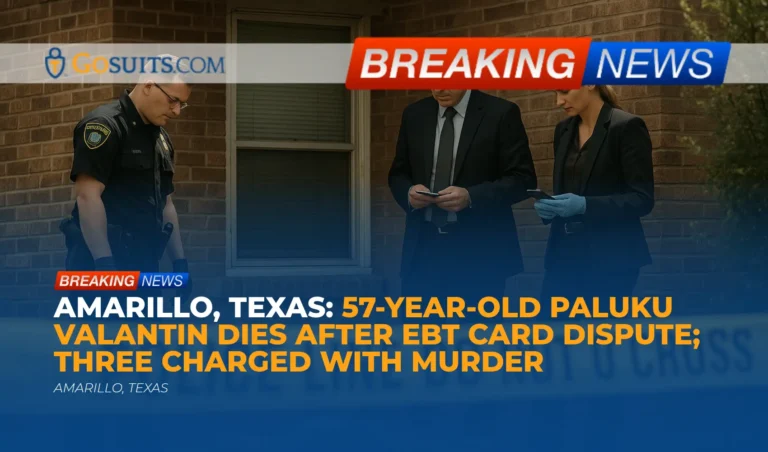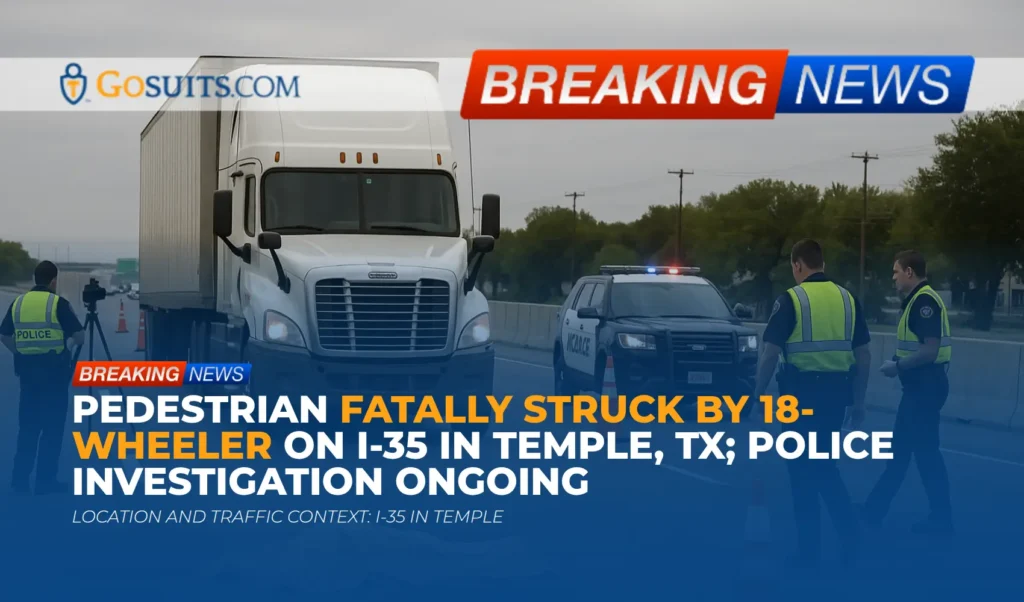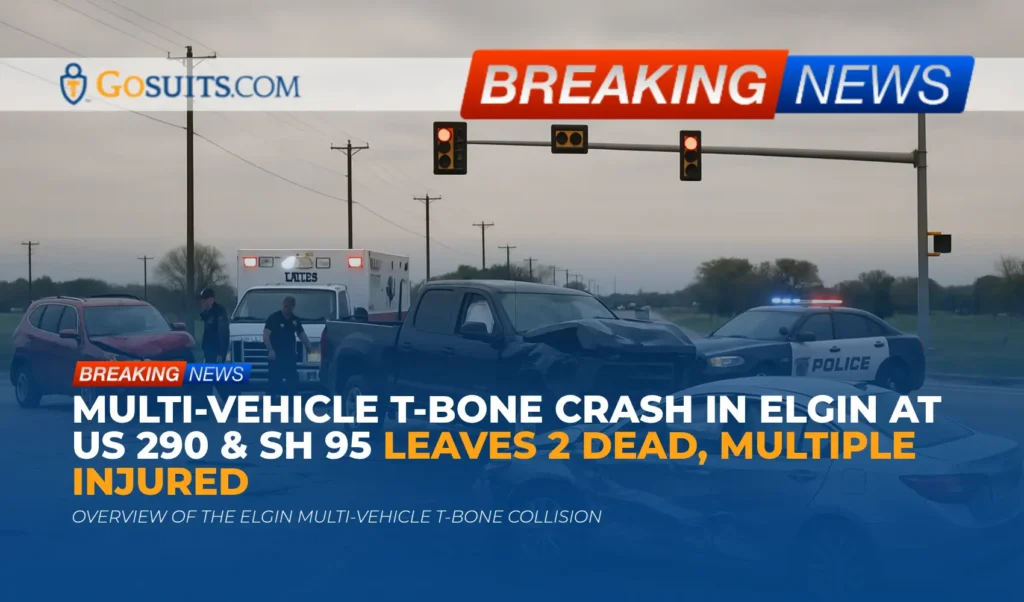- Overview of the reported incident in Amarillo, Texas
- What authorities have reported so far
- Civil legal pathways after a violent death in Texas
- Evidence and records that often matter, and how to request them
- Support and financial resources available in Texas
- Insurance and restitution considerations
- Practical next steps for loved ones
- Context and data about violent crime and robbery-related homicides
- Helpful contacts and official offices for records in the Amarillo area
- Commentary from Gosuits Amarillo, Texas Personal Injury Attorney
- Call to action: Why timely action matters now
Overview of the reported incident in Amarillo, Texas
According to local reporting, Amarillo Police responded to a residence near Bluebell and 11th Avenue at approximately 2 p.m. on September 25. Officers located a 57-year-old man inside the home with apparent head and facial injuries. He was identified as Paluku Valantin. Authorities report that three individuals are accused of beating him and taking his Supplemental Nutrition Assistance Program (SNAP) electronic benefits transfer (EBT) card and cell phone. The investigation indicates the assault began as a confrontation over the food stamp card and escalated into a violent attack involving punches and a glass bottle. The next morning, a witness discovered the man had died and notified police. The three individuals have reportedly been charged with aggravated robbery and murder.
Because this is a recent and active investigation, details can evolve. Any discussion below focuses on general civil law context and victim-support resources in Texas, not the criminal case.
What authorities have reported so far
Key facts reported by police and local officials
Based on the information publicly reported by authorities and local news outlets:
- Time and place: Afternoon of September 25, at a residence near Bluebell and 11th Avenue in Amarillo, Texas.
- Victim: A 57-year-old man, identified publicly as Paluku Valantin.
- Nature of injuries: Head and facial trauma consistent with a violent assault.
- Alleged motive and property taken: Investigators report the confrontation started after a demand for the victim’s SNAP EBT card. A cell phone was also reportedly taken.
- Suspects: Three individuals are publicly named by police as involved in the incident, with reported charges of aggravated robbery and murder.
- Follow-up: A witness helped the victim to a nearby apartment bathroom after the attack, believing he needed rest. He was found deceased the next morning, and police were called.
These facts provide context for the civil legal options and support resources typically available in Texas after a violent, wrongful death.
Civil legal pathways after a violent death in Texas
Wrongful death and survival claims
Texas law recognizes two related civil actions after a fatal injury: a wrongful death claim brought by certain family members for their losses, and a survival claim brought by the deceased person’s estate for harms suffered by the deceased before death. The wrongful death cause of action is set out in Chapter 71 of the Texas Civil Practice and Remedies Code, often called the Wrongful Death Act. The statute is available on the State of Texas website at statutes.capitol.texas.gov.
In general terms, wrongful death claims can be brought by the surviving spouse, children, and parents. The suit seeks compensation for their personal losses resulting from the death, which can include loss of companionship and support, mental anguish, and certain financial losses. The survival action belongs to the estate and addresses the damages the individual could have pursued had they lived, such as medical expenses incurred before death and conscious pain and suffering. The survival statute is at statutes.capitol.texas.gov.
Intentional violence and exemplary damages
When a death results from intentional or grossly negligent conduct, Texas law allows for possible exemplary (punitive) damages in addition to compensatory damages, subject to the limitations and standards in Chapter 41 of the Civil Practice and Remedies Code, accessible at statutes.capitol.texas.gov. Whether exemplary damages are available depends on the facts and proof in the civil case.
Deadlines to file
Texas generally requires that wrongful death and survival claims be filed within two years of the date of death, under Section 16.003 of the Civil Practice and Remedies Code. The statute is available at statutes.capitol.texas.gov. Some exceptions may apply in limited circumstances, so early legal guidance is important to evaluate timelines.
Relationship to criminal proceedings
A civil wrongful death case is separate from any criminal case. A criminal prosecution focuses on guilt and punishment; a civil case focuses on financial accountability for harms and losses. A civil case can proceed even if the criminal case is pending, though timing and discovery may be affected.
Evidence and records that often matter, and how to request them
Police reports and public records in Texas
Access to police reports and investigative materials in Texas is governed by the Texas Public Information Act (PIA), Texas Government Code Chapter 552. The Attorney General provides an overview at texasattorneygeneral.gov. While basic information about a crime is typically public, investigative details may be withheld while a case is active. Families seeking records can submit a public information request to the applicable agency, which in an Amarillo case is often the City of Amarillo Police Department. The PIA sets timelines for agency response and outlines exceptions for ongoing investigations.
Practical tip: When requesting records, be as specific as possible about the date, time, location, and incident description. Ask for any available offense/incident report, CAD logs, call notes, and—if permissible under state law—body-worn camera recordings. Body-worn camera release is subject to specific Texas laws and may require additional steps and fees.
Autopsy, inquest, and death certificates
In Texas, death investigations are handled either by a county medical examiner’s office or, in counties without a medical examiner, by a justice of the peace acting as coroner. The inquest laws are contained in Chapter 49 of the Texas Code of Criminal Procedure, available at statutes.capitol.texas.gov. These statutes explain when inquests are required, who conducts them, and how autopsy reports may be maintained.
Families commonly request two separate records:
- Certified death certificate: This can be requested through the Texas Department of State Health Services Vital Statistics Section. Guidance is available at dshs.texas.gov. Funeral homes can often assist with faster initial ordering.
- Autopsy or inquest report: Requests are typically made to the county medical examiner, if one exists, or to the justice of the peace who conducted the inquest. Availability may depend on whether a criminal investigation is open. Chapter 49 provides the framework for access.
Autopsy reports can be vital in civil cases to establish cause and manner of death and to connect injuries to the incident. If release is delayed due to an active criminal investigation, request a status update timeline and ask to be notified when the report becomes releasable.
SNAP EBT card issues and reporting
If a SNAP EBT card was stolen or used without authorization, the Texas Health and Human Services Commission (HHSC) provides guidance for card replacement and reporting. See the official HHSC information on Lone Star Cards and SNAP at hhs.texas.gov. Federal program background and card usage policies are described by the U.S. Department of Agriculture’s Food and Nutrition Service at fns.usda.gov. Report suspected theft or skimming to HHSC promptly; provide any police report number if available.

Other helpful evidence
In violent-crime wrongful death claims, additional information can be important:
- Witness statements: Names, phone numbers, and any written or recorded statements.
- Video footage: Nearby residences, businesses, and traffic cameras may have relevant video. Ask promptly; many systems overwrite within days.
- Medical and emergency records: EMS run sheets, emergency department records, and coroner photographs or diagrams (where available by law).
- Property records: If the incident occurred on or near premises with security responsibilities, lease agreements, incident logs, and prior-crime records may become relevant in a premises liability assessment.
Support and financial resources available in Texas
Texas Crime Victims’ Compensation Program (VCP)
Texas operates a statewide Crime Victims’ Compensation Program through the Office of the Attorney General (OAG). The VCP can help cover certain out-of-pocket costs that are not fully covered by other sources, such as funeral and burial expenses, counseling, and medical costs tied to the crime. Eligibility and application details are available at the OAG’s site: texasattorneygeneral.gov. Generally, an application should be submitted within three years from the date of the crime, though exceptions exist for good cause.
Applicants will need documentation, which may include a police report number, proof of relationship to the deceased, receipts for out-of-pocket expenses, and any insurance explanation of benefits showing uncovered costs. The OAG site includes forms and assistance information.
Victims’ rights and notification
Texas law provides a comprehensive set of victims’ rights, including the right to be informed about court proceedings, the right to provide input at certain stages, and the right to seek restitution. These rights are codified in Chapter 56A of the Texas Code of Criminal Procedure. An overview is available through the Texas Attorney General’s resources at texasattorneygeneral.gov. Families can request to be connected with a Victim Assistance Coordinator through law enforcement or the local prosecutor’s office to receive updates and support.
EBT card replacement and protection
HHSC provides instructions on replacing damaged or stolen Lone Star Cards and addressing suspected fraudulent transactions. See official guidance at hhs.texas.gov. Federal information about reporting trafficking or fraud within SNAP is also available through the USDA Food and Nutrition Service at fns.usda.gov.
Insurance and restitution considerations
Criminal restitution versus civil recovery
Courts may order a defendant in a criminal case to pay restitution to victims for certain losses tied directly to the crime. Restitution is separate from a civil lawsuit and is limited to the scope of the criminal case. The Texas Attorney General provides information about restitution as part of victim services at texasattorneygeneral.gov. Because restitution orders may not cover all losses and are subject to the defendant’s ability to pay, families often consider a civil claim to pursue additional accountability.
Insurance policies that might be implicated
Every case is fact-dependent, but common insurance issues in violent incidents include:
- Intentional act exclusions: Many homeowners and renters insurance policies exclude coverage for intentional criminal acts by an insured. That can limit the ability to collect from a perpetrator’s personal policy.
- Third-party premises liability insurance: If the incident occurred on property owned or managed by a third party, their liability insurance may be implicated if a premises claim is legally viable. Whether property owners owe duties to protect against third-party criminal acts depends on foreseeability, prior incidents, and security measures, which are fact-intensive issues under Texas law.
- Life insurance and employer benefits: Separate from liability questions, life insurance benefits and certain employer-provided benefits may be available to a decedent’s beneficiaries. Policy terms and claim deadlines apply.
Before contacting any insurance carrier to make statements or provide recorded interviews, it is prudent to consult a qualified attorney. Statements given to insurers can be used later and may affect the outcome of claims.
Practical next steps for loved ones
In the wake of a sudden loss tied to violence, the path forward can feel overwhelming. Practical steps, taken calmly and steadily, can help preserve options:
- Gather and preserve documents: Keep any paperwork provided by law enforcement or medical personnel. Make copies of identification, proof of relationship, and any available photos or videos of injuries or the scene.
- Request key records early: Submit a public information request to the investigating agency for incident/offense reports and basic information. Ask about the process and timeline for autopsy or inquest records. Reference the Texas Public Information Act overview at texasattorneygeneral.gov.
- Secure digital evidence: Texts, social media messages, and location data may be relevant. Save screenshots and back up devices to avoid losing information.
- Identify potential beneficiaries and estate representatives: Texas wrongful death claims are brought by the spouse, children, and parents; survival claims are brought by the estate’s representative. If there is no will, a court may appoint an administrator.
- Consider a safety plan: If there are ongoing safety concerns, ask law enforcement and the prosecutor’s victim assistance office about safety planning and protective resources.
- Consult before speaking with insurers: If a property owner’s insurer, a life insurer, or any other carrier reaches out, consider consulting counsel first. Statements to insurers can affect claim outcomes.
- Explore financial support: Review eligibility for the Texas Crime Victims’ Compensation Program at texasattorneygeneral.gov and ask funeral providers about any available assistance or payment plans.
Context and data about violent crime and robbery-related homicides
While every case is unique, national crime data provides context for incidents involving violent theft and fatal outcomes. The FBI’s Crime Data Explorer compiles trends on homicide and robbery across the United States. Public summaries and definitions are available at fbi.gov. In broad terms, robbery remains a subset of violent crime that can involve the use of force or threat of force, and a portion of robberies each year result in serious injuries or death.
Selected national context from publicly available federal sources:
- Homicide trends: The FBI’s Uniform Crime Reporting program provides annual updates and trend analyses on homicide counts and rates nationwide, including offense circumstances and weapon involvement. See the Crime Data Explorer at fbi.gov.
- Robbery definitions: Robbery is defined federally as the taking or attempting to take anything of value by force or threat of force. While many robberies do not result in death, a subset escalates into lethal violence, particularly where blunt objects or firearms are used.
- Victim services: Federal and state frameworks emphasize early victim services engagement to mitigate trauma and ensure access to compensation and support, consistent with Texas programs described by the OAG at texasattorneygeneral.gov.
Data cannot capture the human cost of a specific tragedy, but it underscores why timely access to records, support, and legal guidance is so important in the aftermath of violence.

Helpful contacts and official offices for records in the Amarillo area
Official sources and offices that commonly assist after a fatal incident in Amarillo include:
- Amarillo Police Department (APD) records: Public information requests for offense reports and other releasable materials can be submitted under the Texas Public Information Act. General guidance on making requests is available from the Texas Attorney General at texasattorneygeneral.gov. The City of Amarillo’s official website is amarillo.gov, where the Police Department and public records portal can be located.
- Autopsy or inquest records: Requests are directed to the county medical examiner (if one is designated) or to the justice of the peace who conducted the inquest. The governing law is Chapter 49 of the Texas Code of Criminal Procedure, at statutes.capitol.texas.gov.
- Death certificates: Order through the Texas Department of State Health Services Vital Statistics Section, guidance at dshs.texas.gov.
- Texas Crime Victims’ Compensation: Application and assistance at the Office of the Attorney General, texasattorneygeneral.gov.
- SNAP EBT (Lone Star Card): Program information and how to report card theft or replacement through Texas Health and Human Services at hhs.texas.gov. Federal SNAP program information at fns.usda.gov.
When requesting records, be prepared to verify identity and relationship to the deceased for certain documents. Some records may be delayed while a criminal investigation is ongoing.
Commentary from Gosuits Amarillo, Texas Personal Injury Attorney
Our hearts go out to everyone affected by the reported loss in Amarillo. Articles like this are intended for educational and general informational purposes to help communities understand what steps may be available after a tragedy. The early days after a violent death are confusing and painful. It is understandable to have more questions than answers.
Based on what has been publicly reported, the circumstances involve an alleged robbery escalating into a fatal assault over an EBT card. From a civil standpoint, Texas law provides a path for families to pursue accountability through wrongful death and survival claims. That process relies heavily on timely collection of records, careful documentation of losses, and a thorough evaluation of whether any third-party responsibilities may be implicated, depending on where and how the incident occurred.
In situations like this, insurance companies and other corporations involved in related claims often move quickly. They may ask for recorded statements, medical authorizations, or broad document access before a family has had the chance to understand their rights. Adjusters are trained communicators, and statements made in grief can later be used to minimize or dispute claims. It is wise to slow the process down, document everything, and get professional guidance before speaking with any insurer or signing anything.
A free consultation can provide clarity about timelines, records to request, and how to navigate communications with insurers and agencies. Even a brief conversation can help identify important deadlines, outline what documents to gather now, and discuss how a civil claim may proceed alongside a criminal case.
Call to action: Why timely action matters now
- Request and preserve key records: Submit public information requests for incident/offense reports and basic information from the investigating agency. Ask how and when autopsy or inquest records will be available. Preserve photos, videos, messages, and receipts that may document losses. Acting within days can prevent loss of time-sensitive video or digital evidence.
- Document losses as they occur: Keep a running log of funeral and burial costs, travel expenses, time away from work, and counseling or support services. Detailed records make later applications and claims easier to evaluate and verify.
- Consult before speaking to insurers: If an insurance representative contacts anyone connected to the incident, obtain guidance before giving statements or authorizations. What is said to an insurer can be used later to dispute or limit recovery.
- Check eligibility for victim compensation: Review the Texas Crime Victims’ Compensation Program. There are deadlines and documentation requirements, and early applications can expedite support for eligible expenses.
- Mark legal time limits: In Texas, wrongful death and survival claims generally must be filed within two years of the death. There are also shorter internal deadlines within insurance policies and administrative programs. Calendar these now to avoid missing a filing window.
- Coordinate with victim services: Ask law enforcement or the prosecutor’s office for a Victim Assistance Coordinator. Coordinators help with notifications, court dates, victim impact statements, and referrals to services.
Taking these steps promptly can protect options, reduce avoidable delays, and create a clearer path forward during an extraordinarily difficult time.






